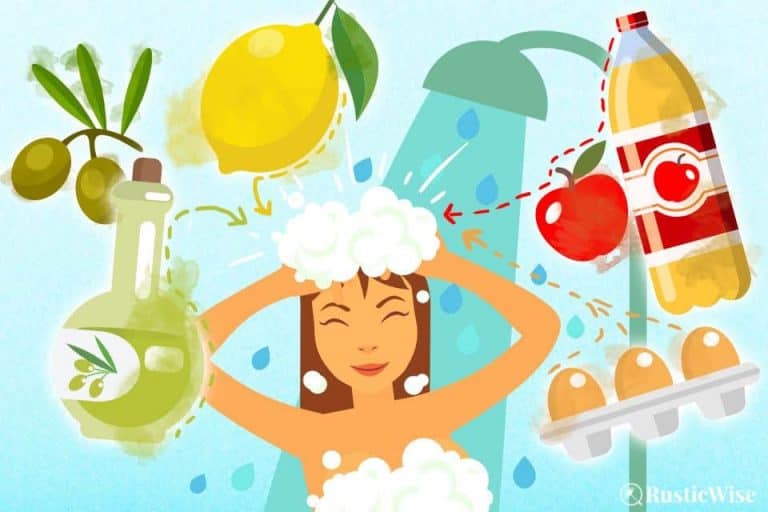Is Sodium Hydroxide Safe To Use in Soap and Cosmetics?
Sodium hydroxide (NaOH) is an odorless, white alkali solid. It’s commonly known as lye, or caustic soda. It’s an extremely caustic and reactive inorganic compound. This leads many to ask, is sodium hydroxide safe to use in soap and cosmetics? The short answer is yes, as sodium hydroxide goes through saponification to make soap. In cosmetics, sodium hydroxide is used in low concentrations as a pH stabilizer.
Sodium hydroxide is also used in many other common household products including drain cleaners, medications, and in some food products.
The danger that sodium hydroxide poses lies mainly in handling pure lye for soapmaking purposes, or dealing with high concentrations of NaOH in cleaning products.
Let’s take a closer look at sodium hydroxide safety and how it’s used in a variety of household products.
Is sodium hydroxide safe to use?
The safety of sodium hydroxide is strongly dependent on the concentration level, with higher concentrations posing greater safety issues. Other factors that affect safety include the length of time of exposure, area exposed, and environmental conditions.
Pure lye as used in homemade and commercial soapmaking, as well as high concentrations for cleaning products require proper safe handling and storage practices.
Sodium hydroxide is extremely caustic and may cause skin and eye irritation, or respiratory issues if inhaled. It’s also poisonous.
Sodium hydroxide is present in many cosmetics in a low concentration (often 5 percent or less).¹
According to the U.S. Environmental Working Group (EWG), sodium hydroxide in personal care products is not linked to cancer, developmental and reproductive toxicity, nor allergies or immunotoxicity.²
The U.S. Food & Drug Administration (FDA) has approved sodium hydroxide for use as a food additive as generally recognized as safe (GRAS) at levels lower than 1 percent.³

How sodium hydroxide is used in common household products
There are many uses of sodium hydroxide. Sodium hydroxide is a versatile compound that’s used to manufacture a variety of products such as paper and petroleum products, including aluminum. It’s also found in many household products:⁴
- Cleaners: NaOH is commonly found in drain cleaners. Sodium hydroxide works to break up grease and fat, common culprits of clogged drains. It’s also used to manufacture bleach when mixed with chlorine.
- Soap: Don’t be alarmed if sodium hydroxide appears high on the list of ingredients of your liquid or bar soap. Lye is a must-have ingredient when manufacturing soap, and is completely harmless once soap is made—more on this below.
- Cosmetics and personal care: Used mainly as a pH stabilizer, you’ll notice sodium hydroxide listed on many everyday products including:
- Face lotion
- Shampoo and conditioner
- Body wash
- Bar soap and liquid hand soap
- Mascara
- Hand cream
- Toothpaste
- Food: Sodium hydroxide is used in very low concentrations in food manufacturing. Some examples include removing skins of fruits and vegetables for canning, and adding a nice golden-brown color to pretzels.
- Medicine: Sodium hydroxide is found in many headache medicines, anticoagulants (prevention of blood clots), and cholesterol-reduction medications.
- Water treatment: Local municipalities use sodium hydroxide to stabilize water acidity and to remove metallic impurities from water. It’s also used to make a water disinfectant (sodium hypochlorite).
How does sodium hydroxide work in soap?
We’ve touched on how sodium hydroxide is a highly caustic chemical which can irritate eyes, skin, and the respiratory system. So why on earth would we want to use this to make soap—something we rub on our hands, body, and face?
Good question.
The answer lies in the chemical process of saponification. The use of lye is an essential part of making soap.
Saponification: the act, process, or result of making soap : conversion into soap —Merriam-Webster
At its most basic level, making soap requires sodium hydroxide (lye), water, and oil/fat to start the chemical process of saponification. As you know, water and fat don’t mix well on their own. That’s where sodium hydroxide comes into play.
If you don’t use sodium hydroxide (or potassium hydroxide, another compound used in soapmaking), you can’t make soap. You’ll just have a big, gooey mess.
When lye is added to water (not the other way around), it produces an exothermic reaction, which means it gets very hot, very quickly. Soapmakers then combine this lye/water mixture with the oil or fat base to produce soap.
If you get nervous seeing sodium hydroxide listed on the ingredients of your favorite soap, don’t worry. While a fair amount of sodium hydroxide may be used to create the soap, a properly finished product doesn’t contain sodium hydroxide anymore.
You’re left with soap.
Although most manufactured soaps contain synthetic fragrances, preservatives, and dyes too. You can read more about why you might want to switch to homemade, natural soap.
You can limit harmful exposure to sodium hydroxide by taking the proper safety precautions when soapmaking such as:
- Wear appropriate safety gear (gloves, respiratory mask, safety goggles, long-sleeves).
- Work in a well-ventilated room.
- Store your batch of NaOH in a dry, cool area in its original container (typically HDPE plastic) with warning labels.
- Keep safely out of reach of young children and pets.
- Avoid using metal utensils or bowls when handling NaOH—sodium hydroxide is corrosive to metals.
- Protect yourself from heat when adding NaOH to water. Prepare yourself for an exothermic reaction.
- Keep sodium hydroxide in an airtight container as it absorbs moisture from the air, and also dissolves in water.
Read more about proper storage and the Shelf Life of Sodium Hydroxide Pellets.
How does sodium hydroxide work in cosmetics?
Now that we’ve gone over how lye works to make soap, you may still wonder about the inclusion of sodium hydroxide in cosmetics.
We mentioned briefly that sodium hydroxide acts to balance or stabilize the pH in cosmetics.
Here’s a brief refresher on pH levels:
- The pH scale is from 1 to 14 with 7 considered a neutral.
- Anything below 7 is considered acidic.
- Anything above 7 is considered a base.
The pH level of sodium hydroxide is 13.0 which means it’s an alkali, or soluble base. It’s a pretty strong base with unique properties. As we’ve seen in soapmaking, the amount of sodium hydroxide put into a product is not equal to the amount present in the finished product.
When sodium hydroxide is mixed with water, the hydrogen and sodium ions separate. The sodium ions are pretty harmless (remember that sodium chloride makes plain table salt).
The hydroxide ions are the ones we should worry about. The hydroxide ions affect acidity levels. Since sodium hydroxide is such a strong base, it works to absorb the hydrogen ions in water making it more neutral.
The EWG classifies sodium hydroxide as “low” concern for health and the environment.⁵
In a nutshell, the use of sodium hydroxide in cosmetics and personal care products creates a less acidic product that’s safer to use on skin, scalp, and hair. In most items, sodium hydroxide is no longer present in the final product. In cases where it is, the pH levels are carefully managed for safety.
The takeaway: is sodium hydroxide safe to use?
In its pure form, or in levels of high concentration most commonly found in cleaning products, sodium hydroxide needs handling with caution. Proper safety gear, storage, and knowledge of how sodium hydroxide reacts helps minimize risks.
The FDA allows low concentrations of sodium hydroxide for use in food processing. The EWG rates the inclusion of sodium hydroxide in cosmetics and soap products as “low concern.”
In soap, lye, or sodium hydroxide is an essential ingredient. Once soap is properly made, the sodium hydroxide is rendered harmless through saponification. You are left with soap—you don’t need to worry about the sodium hydroxide burning your skin.
In cosmetics, sodium hydroxide is used in very low concentrations (typically 5 percent or less) to help balance the pH levels in products to make them less acidic.
New to making soap? 🧼❓
👉We have a fantastic overview on the whole soapmaking process here: read our Timeless Guide To Soapmaking.
If you would like to see our soapmaking posts organized by topic type, see our Soapmaking Collection.
Would you like more timeless tips via email?
Fun tips to help you live an independent, self-sustaining lifestyle. Opt-out at any time.


References
- Milner, Diane (13 August 2018). “Top 3 Surprisingly Versatile Uses of Sodium Hydroxide,” NOAH Technologies. Accessed December 2020.
- U.S. Environmental Working Group, EWG’s Skin Deep®, SODIUM HYDROXIDE, https://www.ewg.org/skindeep/ingredients/706075-sodium-hydroxide-SODIUM_HYDROXIDE/. Accessed December 2020.
- U.S. Food & Drug Administration, CFR – Code of Federal Regulations Title 21, https://www.accessdata.fda.gov/scripts/cdrh/cfdocs/cfcfr/CFRSearch.cfm?fr=184.176. Accessed December 2020.
- ChemicalSafetyFacts.org, Sodium Hydroxide, https://www.chemicalsafetyfacts.org/sodium-hydroxide/#uses-benefits. Accessed December 2020.
- U.S. Environmental Working Group, Substances, SODIUM HYDROXIDE, https://www.ewg.org/guides/substances/5570-SODIUMHYDROXIDE/. Accessed December 2020.

Author: Josh Tesolin
Josh is co-founder of RusticWise. When he’s not tinkering in the garden, or fixing something around the house, you can find him working on a vast array of random side projects.









